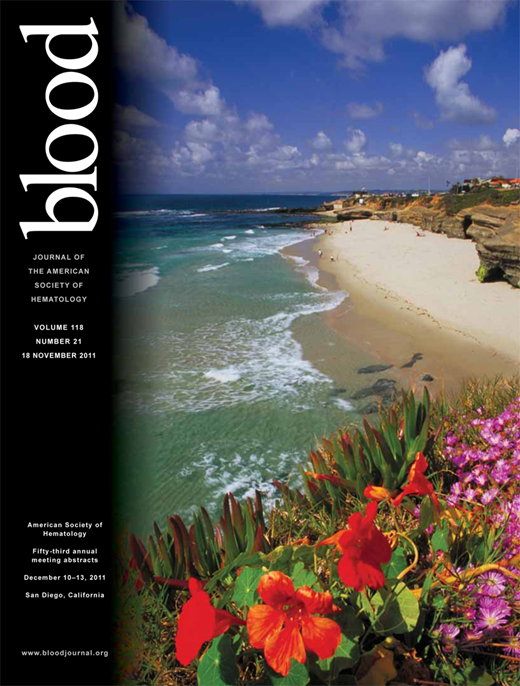Abstract
Abstract 3179
Ineffective erythropoiesis in congenital dyserythropoietic anemia type I (CDA I) is characterized by increased iron absorption mediated by down-regulation of hepcidin. It has been suggested that growth differentiation factor 15 (GDF15) contributes to the inappropriate suppression of hepcidin. Hemojuvelin (HJV), an important regulator of hepcidin production, is highly expressed in skeletal muscle and the liver. Mutations in the gene encoding HJV lead to severe hepcidin deficiency and juvenile hemochromatosis. Membrane-bound HJV (m-HJV) acts as a co-receptor for bone morphogenetic proteins (BMPs). HJV also exists in a soluble form (s-HJV) which competitively down-regulates hepcidin by interfering with BMP signaling. At least two proteases, furin and matriptase-2, cleave m-HJV into s-HJV. Recently, Brasse-Lagnel et al. (Heamtologica 95:2031–7, 2010) reported a new assay for measuring both the furin- and the matriptase-2-cleaved forms of s-HJV. The aim of the present study was to evaluate the possible role of s-HJV in the development of iron overload in CDA I. The study group included eight (8) Israeli Bedouins with CDA I who were homozygous for the founder mutation, c.3124C>T. All were young adults of mean age 27 years. One patient had undergone splenectomy and is currently transfusion-dependent; 3 female patients required occasional blood transfusion during intercurrent infection, pregnancy, and delivery. Nine healthy volunteers served as the comparative group. Laboratory data, including levels of serum hepcidin, ferritin, erythropoietin, soluble transferrin receptor (sTfR), and GDF 15, were previously collected in both groups (Tamary et al. Blood 112:5241–4, 2008). Serum levels of s-HJV were measured in stored frozen samples using a competitive ELISA assay based on an anti-HJV polyclonal antibody (Brasse-Lagnel et al. Heamtologica 95:2031–7, 2010). Compared to the healthy volunteers, the patient group was characterized by significantly higher levels of s-HJV (1.99±0.98mg/L vs 0.36±0.25mg/L; p=0.001), significantly lower level of hemoglobin, and significantly higher levels of serum ferritin, erythropoietin, GDF 15, and sTfR. Serum hepcidin levels were similar in the CDA I patients and the healthy volunteers, but the hepcidin-to-ferritin ratio was significantly lower in the patient group, suggesting that serum hepcidin concentrations were inappropriately low. Levels of s-HJV negatively correlated with hemoglobin levels (R= −0.69 p=0.002) and positively correlated with the iron loading parameter, serum ferritin (R=0.73 p=0.000), and parameters of erythropoiesis, such as serum erythropoietin (R=0.63 p= 0.006) and sTfR (R=0.66 p= 0.008). Additionally, GDF 15 level was positively correlated with s-HJV level (R= 0.64 p=0.006), whereas the hepcidin-to-ferritin ratio (R=−0.797 p=0.000) was negatively correlated with s-HJV level. In summary, our study suggests that s-HJV is overexpressed in patients with CDA I and probably contributes to the down-regulation of hepcidin and the iron-loading pathology. To our knowledge, this is the first study to analyze s-HJV levels in a disease characterized by ineffective erythropoiesis. The main limitation of our study is the small number of patients. Larger studies including patients with CDA and thalassemia are indicated. The source of serum s-HJV and the trigger for its overexpression in CDA I still need to be established.
No relevant conflicts of interest to declare.
Author notes
Asterisk with author names denotes non-ASH members.

